These angry looking guys are known as komainu (狛犬, koh-my-new), often translated as “lion-dog”. They are present at many Shinto shrines and occasionally other places and are thought to protect against evil.
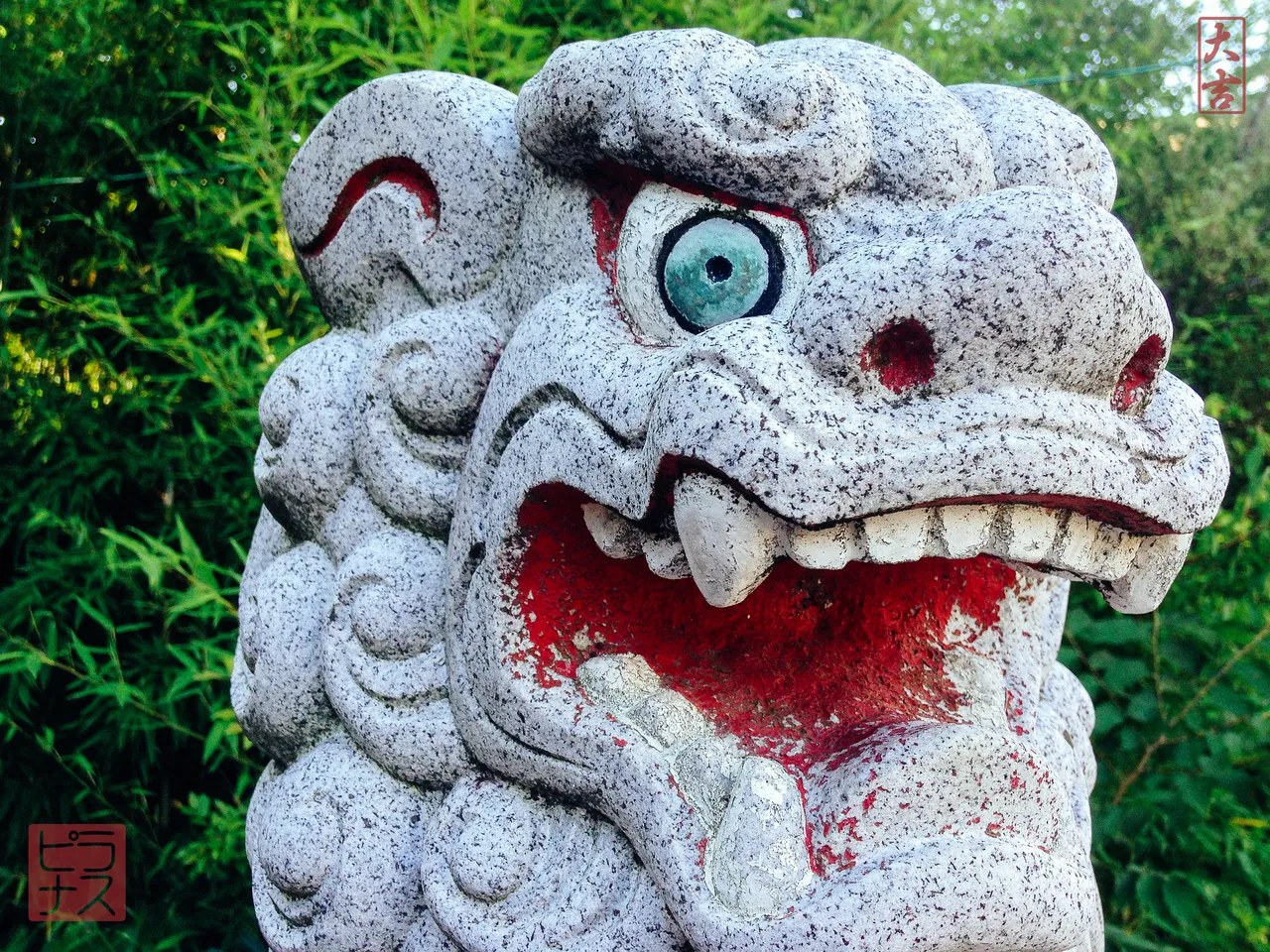
Fearsome, eh?
So... what's a komainu? Glad you asked!
A Brief Introduction to Komainu
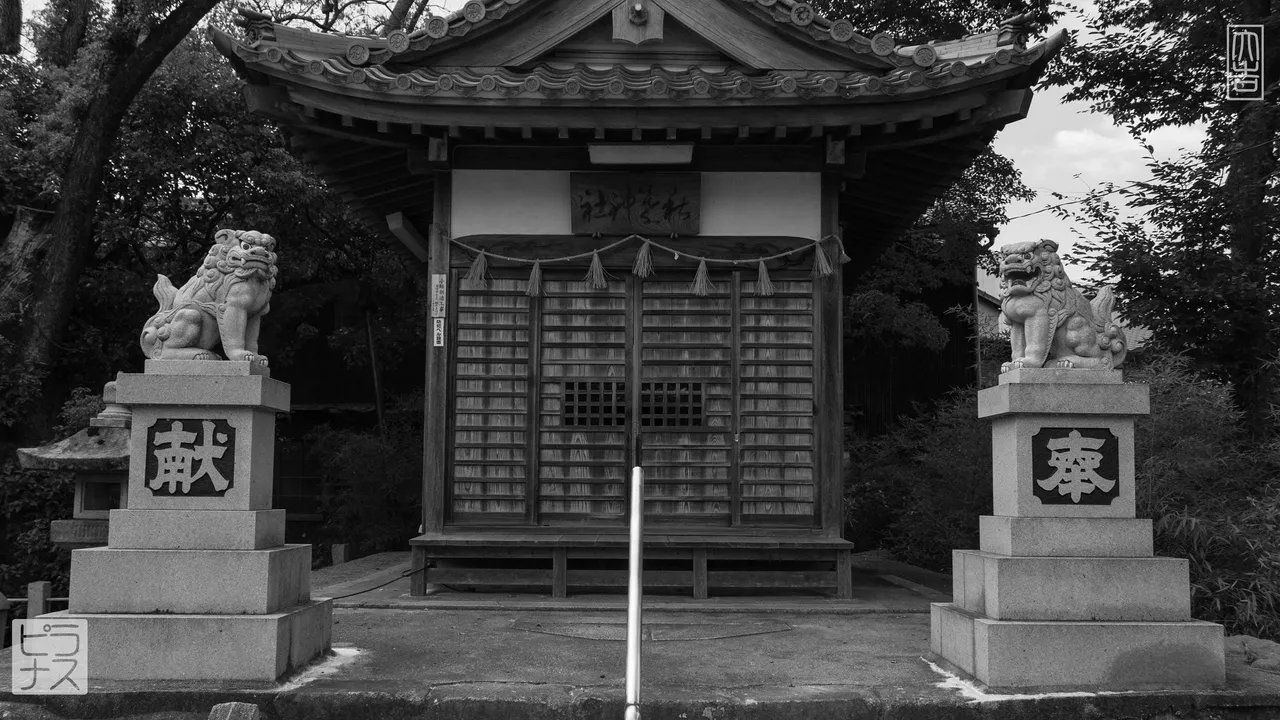
There are always two komainu together, often flanking the entrance or path to a shrine and then again flanking the shrine itself, one with mouth open (named Ah, 阿), and one with mouth closed (named Um, 吽); individually they represent the beginning and the end of all things, and together form the sacred sound aum (ॐ).[1]
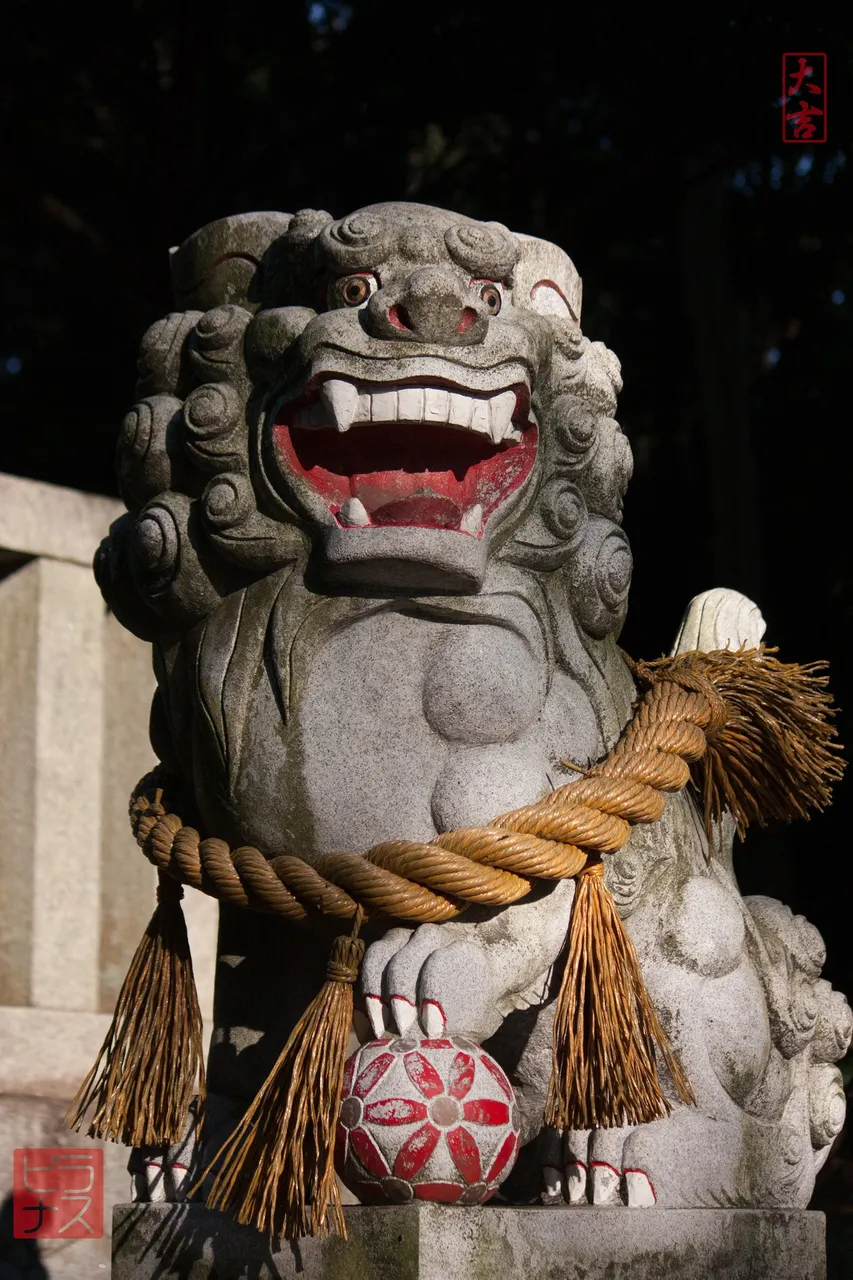

So… why lion-dogs?
In India and the Middle East, the lion was a symbol of strength. This became associated with the Buddha, whose teachings were said to hit like the roar of a lion. As Buddhism spread towards China, this image spread as well.
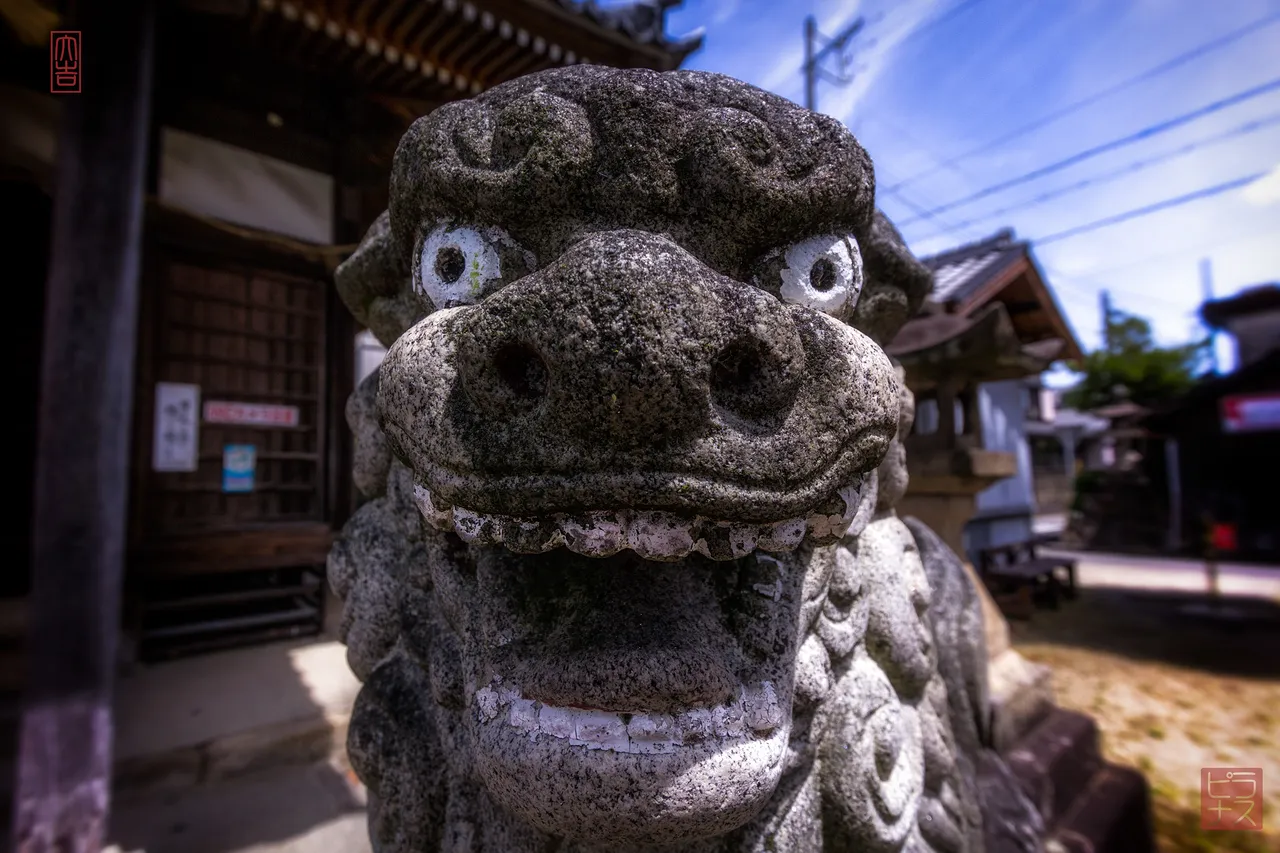
In China you often see these lion statues flanking temples. In English we sometimes call them fu-dogs, fu meaning either “Buddha” or “prosperity”.[2]
From here they came to Japan by way of Korea, but altered slightly. The Japanese used two different statues. The one with its mouth open was a lion and called shishi and the one with it’s mouth closed looked more like a dog and was called komainu, which means Korean dog.[3]
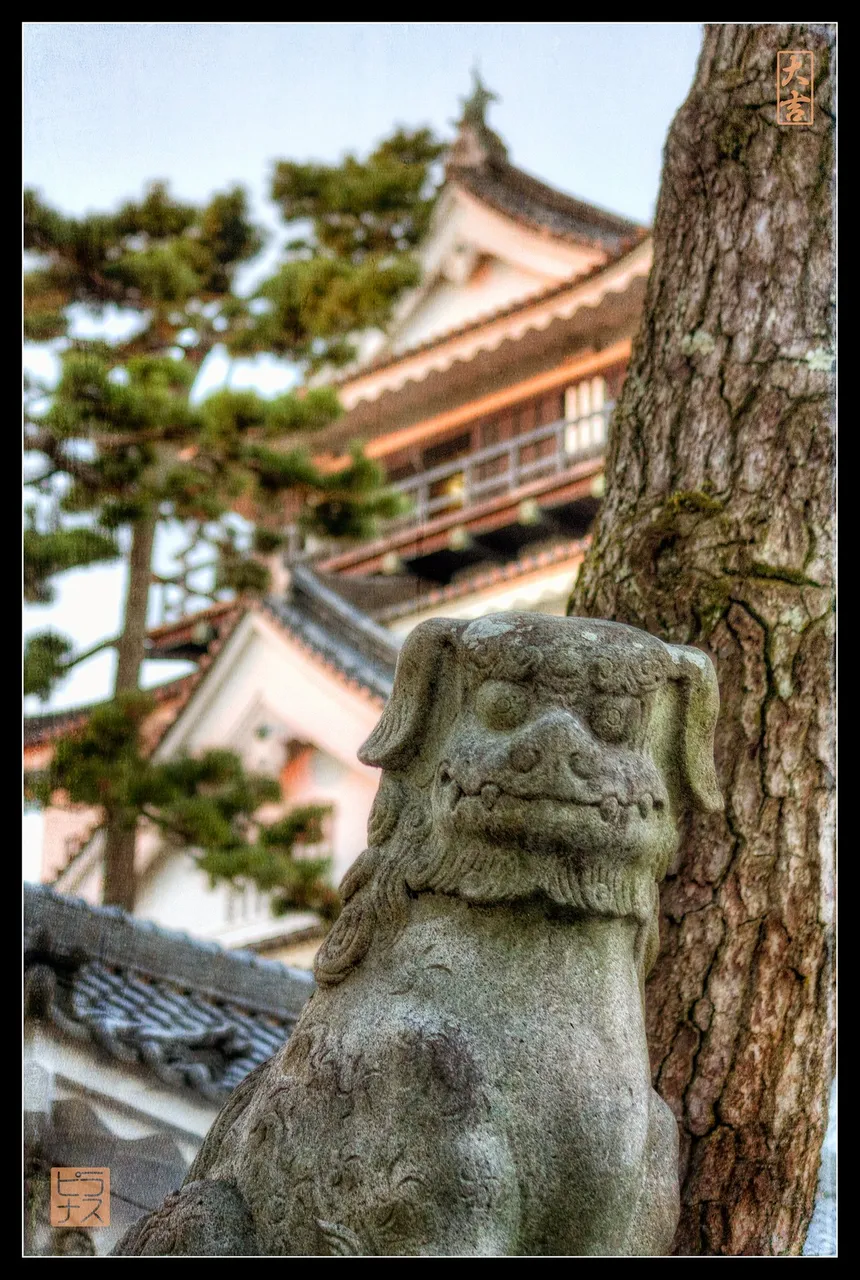
Eventually they both came to look identical except for the mouth, and kept the name komainu. Sometimes you still see material refer to them as shishi, and occasionally you’ll hear it too, but komainu is the much more common way to refer to them these days.
Buddhist statues at Shinto Shrines
But—I hear you cry—why are Buddhist lion-dog guardian statues in a Shinto Shrine if they are, y'know, Buddhist? Ah, now there's a question! One that will have to wait for next time, Grasshopper.
(But here’s a hint: for much of Japanese history, Shinto was actually considered a part of Buddhism. If you want to skip the wait and do research yourself, the term you want is shinbutsu-shūgō (神仏習合).)
So there we go. Buddhist lion-dog statues from India, by way of China, by way of Korea and named for there, guarding Shinto shrines where Japanese gods (kami) live. Just a typical mixed up part of Japan, and another reason why I love it here so much.
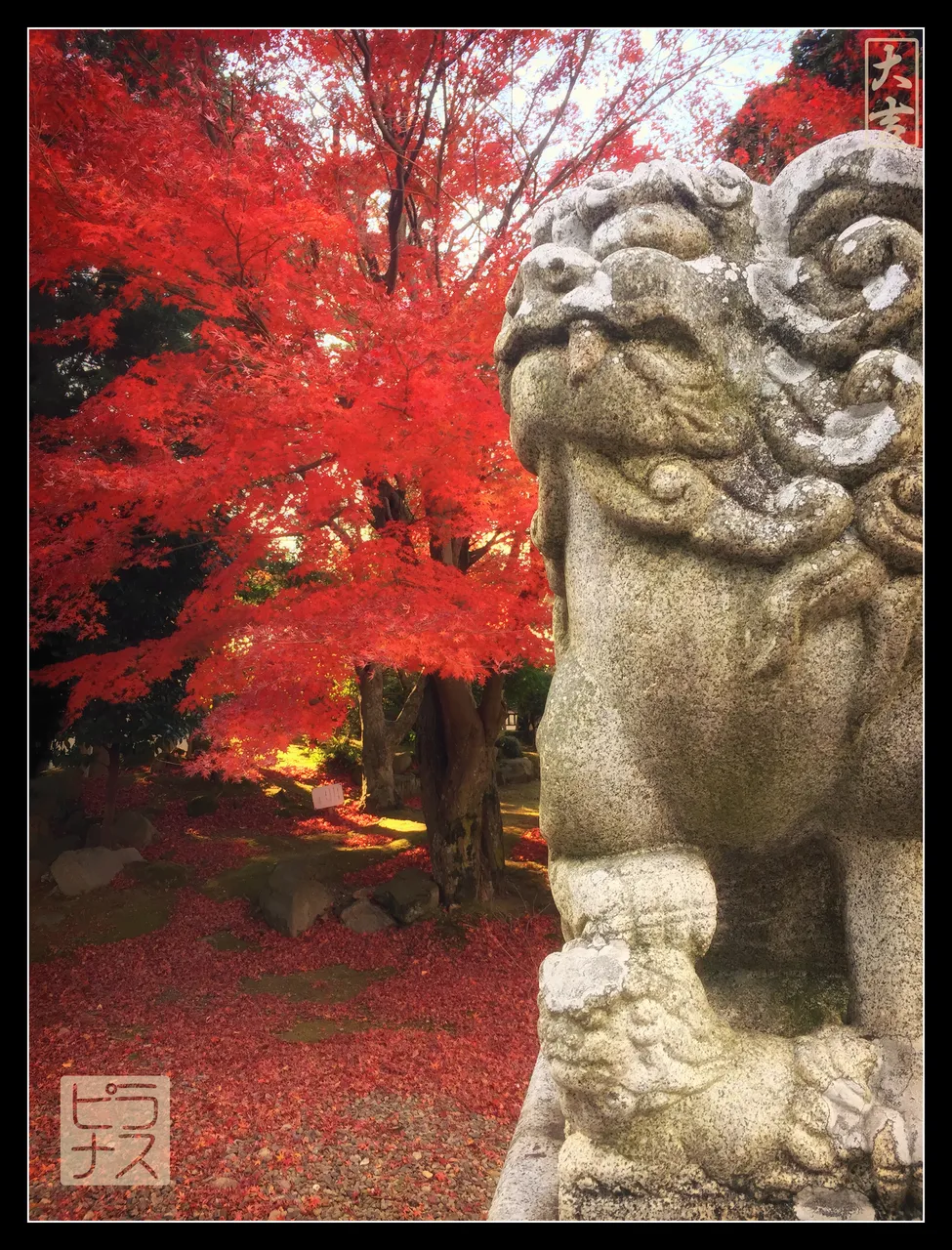
❦
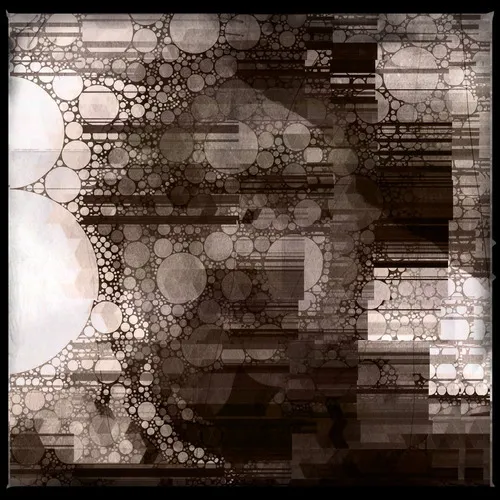 | David LaSpina is an American photographer and translator lost in Japan, trying to capture the beauty of this country one photo at a time and searching for the perfect haiku. |
The actual Sanskrit they represent is अहूँ, which was transliterated in Japanese as 阿吽 (ah-um). As you can see above, that word was then broken up to give each komainu their name. Often 形 (gyō, shape) will be attached, making their full names 阿形 (agyō) and 吽形 (ungyō).
अहूँ is composed of the first and last letters of the Sanskrit alphabet (अ, pronounced ah and ह, which is pronounced as हूँ—ɦūṃ). This sound is equated to the sacred syllable aum (ॐ), which I’m sure many of you are much more familiar with. ↩
Fu is thought to be a transliteration of either 佛 (fó) or 福 (fú), which mean "Buddha" or "prosperity" in Chinese, respectively. ↩
Technically "Goguryeo dogs", Goguryeo being one of the three Korean kingdoms that existed at the time. Most texts use “Korean dog” for the sake of simplicity. ↩
